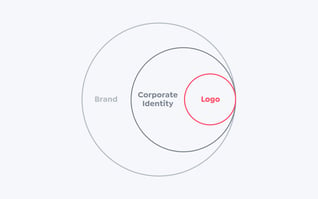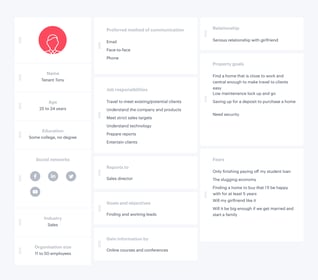Reading time: Approx. 8 min
In the age of the internet, there are 100s of companies competing for your market. When a potential user (tenant, buyer, seller etc) comes across your company online or in the “real” world, they automatically compare it to, not only other real estate businesses, but also brands from other industries. It’s the nature of humanity’s consumer evolution and, because of our increased exposure to advertising, we’re becoming better at recognising good branding from bad. There is a lot of noise out there that you have to compete with.
Two of the biggest differentiators any business have are: their brand and their service (both client facing and internal). And both can be designed.
This sounds like a daunting task, but it doesn’t need to be. If you follow some simple rules and get the basics right early on, your brand can be a shining light in the dark. And remember, some companies have beautiful brands that are being executed well, but the vast majority are falling short. So, if you’re reading this you’re already one step ahead.
Logo: The symbol and/or wordmark used to visually identity your company.
Corporate Identity: A collection of the visual (and even audio) elements that your users come into contact with. It’s made up of your logo, boards, business cards, stationery, office signage, advertising etc. It’s critical that your corporate identity supports your brand.
Brand: Your brand is not your logo or even your corporate identity. It’s much more. It’s the relationship you have with your clients/the connection/the promise. Sound like a lot of hippie nonsense? It’s helped brands like Apple sell expensive products to millions of devoted users fans.

So where do you start? Well, if you’re a startup agency, or even an existing brand that needs a re-think, that’s easy. With a question.
What is the journey that we want our users to take with us?
The start of an answer to this question might be: “We want sellers to feel like we’re family, that they can trust us and that we’ll hold their hand through the process”. Answer this question honestly, build on and then refine it and you’ll have the foundation of your brand.
PRO MOVE - Dig deeper. Answer the questions below to build on the journey and give more context to help the design team you’re partnering with. I say “partnering” because this is a collaborative process. Branding your business can’t be left to designers. Business owners need to be involved.
The most important thing here is the process. By sitting down, contemplating, discussing and writing down the answers to these questions, you’ll unravel the brand essence of your company.
The most important thing that defines your brand are the users. As highlighted above, you need to have a good picture of who they are to answer the right questions.
A persona is a fictional person we create based on characteristics shared by users. You can now design your brand and market your services for a specific somebody not a generic everybody. Don’t assume you know your users.

You can spend a fortune with research companies to generate these. They’ll interview your users and use a number of techniques to analyse the data and build personas. You can, however, do these in-house and still get a lot of value out of them. There are some great tools to help you through the process. Try https://www.hubspot.com/make-my-persona
You can create a number of personas (limit to 5 or less) to cover different groups of users, but remember to niche them to your geographic areas. For example, the following personas could be created for a sales agency in Cape Town’s Atlantic Seaboard:
If you have access to demographics, use them. If you can send out a questionnaire to your users, do it. Or, at a minimum, just pool the knowledge of the people in your company.
Personas can also be used in your sales and marketing funnel which we’ll cover later in this course. Bonus!
Answer the right questions. Especially: “What is the journey that we want our users to take with us?”. Build personas of your users to ensure you’re saying the right things to your actual users.
You now have a basic brand that you can use to brief your design team with and start building your corporate identity and an online marketing strategy.
Next up: Your logoCopyright © 2025 Prop Data (Pty) Ltd Privacy Policy